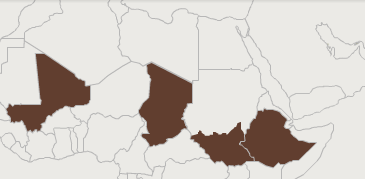Every once in a while it is important to take a step back from the day-to-day drumbeat of news and consider something from a more world historical perspective. Such is the case with word from the World Health Organization that Guinea Worm is slated for global eradication.
Guinea Worm, also known as Dracunculiasis, is a parasitic disease spread when people injest water tainted with a certain kind of flea that contains larvae. The larvae are hatched within the person’s digestive tract, and they grow into worms — sometimes as long as one meter — that live inside the body and protrude through the skin. It is a painful, debilitating and sometimes deadly. There are no-vaccines or medicines that you can take to cure or prevent Guinea Worm Disease. The most people can do is take appropriate precautions when drinking from stagnant water sources.
In 1986, the disease afflicted an estimated 3.5 million people a year in 21 countries in Africa and Asia. Last year, there were just 1,100 cases. So far this year, there are fewer than 400 cases, in but 4 countries: Mali, Ethiopia, Chad and South Sudan (the latter of which accounts for 99% of the cases). Humanity is very, very close to defeating this crippling disease once and for all.
The Carter Center, along with Unicef and the World Health Organization helped rally the world around this eradication drive. Much of the credit goes to these organizations.
Small Pox was the first disease to face global eradication thanks to the concerted efforts of NGOs and the UN. Guinea worm may be next. After that–it’s polio.
It probably won’t make the front page of the New York Times. But the fact that we are on the cusp of eliminating a disease that has devastated humanity for centuries is a much bigger deal for more people around the world than anything else that’s happening in the world this week.

